- Home
- Tom Clancy
Into the Storm: On the Ground in Iraq sic-1 Page 27
Into the Storm: On the Ground in Iraq sic-1 Read online
Page 27
"Welcome. You all know where we're going unless you missed AFN last night. This will be a different kind of meeting than we originally had planned for this morning. Butch [MG Butch Funk], welcome to the VII Corps team. As I understand it, you will report here for operational matters, but stay plugged into V Corps for your deployment.
"I am proud that we are able to answer the call. Proud that the JAYHAWKS are going. I told the CINC [General Saint] two months ago that if they needed another corps in Saudi, we were ready. We finished our mission in Europe and, besides, we are halfway there. Getting there will be a tough challenge, especially from a standing cold start. We can do it and will. We need to do what we know how to do. I want teamwork, since we will have a new lineup. We need discipline and reliance on the chain of command, since there will be a lot to do at the same time. There will be adjustments necessary, to be sure. Stay loose. This deployment will not go with the precision of laser brain surgery. Don't get frustrated because there is not much you can do about it anyway. As deployment friction generates time, use that time for training, especially in fundamentals. Remember, skill in fundamentals wins in combat.
"In the absence of any mission orders, I want you to use your training time to concentrate on the following: chemical protection; weapons skills to be razor sharp, especially long-range gunnery; field craft, or living in the desert [later we would call it getting desert-smart and desert-tough]; and maneuver of large formations.
"One other thing. We will go do what we have to do and talk about it later. We are going to join our fellow soldiers who have been there now in a tough situation for three months. We are good, we know that. If we have to kick some ass, we know how to do that, too. But we do not need a lot of swagger bullshit about us coming into theater as saviors of the situation down there. Quiet professionalism is what I want. Inner toughness. My words to my cavalry friends fit here; that is, I want more gun smoke than horseshit."
We agreed on that.
Next was to arrange for a leaders' recon on Sunday to Saudi Arabia and look at our new area of operations, to talk to our fellow soldiers and leaders to get some lessons learned, and get some mission guidance from the CINC. One other benefit would be to remove some of the unknowns and stop some rumors, plus help commanders decide how much of what to take (not tanks or other major unit items, but things such as spare parts, training materiel, cots, tents, athletic equipment for whatever spare time the troops would have, etc.).
We then went over other things: preparation for the overseas move (all the coordination necessary to get soldiers processed — shots, wills, family-support plans for those single parents and dual military, etc.); the importance of physical training; making a thorough people check so that we would know if we had any deployability problems; and finally the alignment of how we spent our training time to practice skills required for our mission, whenever we got it.
Family support was a big issue since we were already a forward-deployed force with family members, and we would now deploy again, this time without family members. Our Army had not done this on such a scale before, so we wanted to ensure we had well-thought-out military community family-support plans, that the Army would help our families take care of themselves. This was a particular point of pride with them, most of whom decided to stay at home in Germany rather than go back to the U.S.A.
Operations security was a question on everyone's mind. What could we say and what couldn't we? Good question. Our rule was we could talk about what President Bush, Secretary of Defense Dick Cheney, and General Colin Powell had said on TV last night, but not much more. I did not want any mention of size of our units, or the sequence of our deployment (at this point that was also a mystery to my commanders, so no worry about that), or any speculation about what we would do when we got there.
Finally, I told the commanders that we would lead with the 2nd ACR, followed by our signal, logistics, and engineer units, then the rest of the combat units. Details would follow when I got the OK on deployment order from CENTCOM.
It was a short meeting. I wanted to get things in motion rapidly. The corps needed to explode into immediate action. It is what we would have done if the Soviets had launched a surprise attack. For us it was something that we had lived with in Central Europe for forty years. For all those years, we had had unannounced readiness alerts every month, in which we would have to clear our barracks and motor pools, including ammo upload with all our vehicles, in less than two hours. We could handle this cold start. I was sure of it.
The other reason I was sure was that I was talking to winners. Leaders who had stayed the course, who had been part of a twenty-year rebuilding of the U.S. Army, who had just helped win the Cold War without a shot fired. I recognized this kind of an outfit.
I had been through this before. It would be the same in a lot of ways, but one thing was certain — this time the results would be different! I personally owed that to my fellow amputees from Valley Forge and to the soldiers now entrusted to my command.
TEAM BUILDING
Since the VII Corps that had been stationed in Germany was only a portion of the VII Corps that went to Saudi Arabia, special efforts had to be put into creating the new VII Corps team.
For the commander, team building is not simply a matter of bringing the new units on board, showing them they are welcome, and incorporating their work styles into your own; team building is a matter first of assessing the following skills and then of acting on your assessment. You have to know (1) how well the new leaders communicate with you and with one another; and (2) how well they execute whatever it is they are supposed to be doing. You want the new people to fit in, yes, but fitting in is not the first goal. You want them to fit in in such a way that you can use them to achieve the goals you set for them within the mission.
Communication involves, first of all, knowing who you're dealing with. You find this out partly during the regular meetings with your subordinates and partly by visiting them on their own turf. The normal give-and-take of meetings will give you a sense of what's important to the various subordinates, how each looks at situations under discussion, and so on. In an organization as large as an Army corps, there will of course be particular practices and policies that have to be insisted upon. These have to be done in a certain way and no other, and that's the way it must be. They are not negotiable. Franks calls such items FARs—"flat-ass rules." Other policies and practices are up for discussion; there are several possible ways to accomplish them. From observing how subordinates deal with these and how they interact with one another and with you during meetings, you get a sense of who you're dealing with. You also watch to see how quickly the others understand what you have to tell them. Some people understand you almost immediately. Others need detailed explanations. Others are full of questions. Some need very precise language in order to understand you. Others "get it" on the fly. None of these communication styles is necessarily wrong, or bad, though quickness and precision in communication is obviously desirable in the Army.
In combat, you're rarely in the same room with your most important subordinates, and when you see them, you don't usually spend two hours with them. You're with them for maybe fifteen minutes to half an hour at a time, or perhaps forty-five minutes at the maximum; then you're off to somewhere else. In those fifteen or so minutes, the communication has to be exceptionally quick, accurate, and disciplined. With some subordinates, you can always get your business done fast, often in less than ten minutes. Others might take an hour to cover the same business. If a commander is not able to see all of his subordinates during a given swing around his command, he might choose to see face-to-face only those subordinates who are not as quick, precise, and disciplined as the others. The quick ones can perhaps be handled over the phone.
You have to know how subordinates communicate, and then you have to know how well they execute in leadership situations. You find that out by visiting their positions and talking to the troops and the small-unit leaders. In time
you begin to get an idea of what your leaders are made of, how they issue orders, how they react in leadership situations; and you can determine from that what types of missions you're comfortable giving them in future combat situations. What you're looking for is a commander, and his subordinates, who can do whatever you ask them to do; who can execute it very thoroughly and quickly, and up to a standard of perfection that they themselves will be proud of; who are capable of handling two or three significant operations simultaneously; and who are very resilient in their ability to handle mission planning.
When you are building teams, and teams of teams, that's what you are trying to build. And to the credit of Fred Franks and his colleagues, that was the kind of team he took to Saudi Arabia.
LEADERS' RECON SAUDI ARABIA 11 NOVEMBER TO 15 NOVEMBER 1990
On Sunday, 11 November, Franks flew to Riyadh in an Air Force C-21—the Air Force version of the Learjet. With him on the six-seater was the core group he wanted instantly up to speed in the new theater. The rest of his leaders were to arrive in Dammam two days later, on the thirteenth. On the Learjet with Franks were Brigadier General Bob McFarlin, the commander of the 7th Support Command (in charge of VII Corps logistics); Colonel Stan Cherrie, the G-3; Colonel Ed Simpson, the deputy chief of staff, whom Franks had appointed to be commander of the VII Corps port arrival unit; Colonel Rich Walsh, commander of the 93rd Signal Brigade (communications in the austere desert environment was going to be a big challenge for the corps signal brigade, so Franks wanted Rich Walsh to come down early to look around); and Major Toby Martinez, Franks's aide. The journey took a full day, including a fuel stop in Cairo. They arrived in Riyadh after dark, and they were met there by John Yeosock (to welcome Franks, Yeosock gave him his sand-colored baseball cap to replace Franks's floppy issue hat). After a working meal with Yeosock, the briefings started. The next four days were packed with meetings, briefings, and field trips to check out ports and the Tactical Assembly Areas, and to visit units and commanders already deployed in the desert.
For Franks and his leaders and staff, it was to be their first opportunity to get a personal sense of this very strange, unfamiliar, and harsh place where they were about to set up operations, of the people who lived there, and of the many challenges he and VII Corps were about to face. They had a lot to do in a short time; Franks's mind was working at top speed, taking in impressions from all of his senses, concentrating on details of briefings, taking notes, asking questions, doing whatever he could to get a feel for the operational situation, the training situation, the living situation for his troops. He was also aware that they were making a first impression on the others in the theater. Many of the units already there had been in theater for months, deterring further Iraqi aggression into Saudi Arabia. These soldiers had worked hard under exceedingly uneasy conditions (if the Republican Guards had continued to the south in August or September, Coalition airpower just may have stopped them, but the Coalition forces then on the ground would have had a very hard time keeping the Iraqis out of the Saudi oil fields). And they were understandably proud of their success. Franks wanted to make sure that his own people portrayed a professional force that was simply coming to do its part in a team that was already established. He didn't want any swagger or chest thumping.
And so Franks and the others went around — covering hundreds of kilometers. They saw the terrain, the ports, and the desert. They talked candidly to their fellow commanders and soldiers, and learned from them. And finally, General Schwarzkopf gave a mission briefing for all of his commanders, division and above. It was Schwarzkopf 's most important briefing of the war, the first and only mission briefing they were to get from him.
It was held on Wednesday morning, 14 November, in Dammam, in a building the U.S. military leased from the Saudis for use as a dining facility. The security at the door that morning was unusually tight.
All the U.S. commanders from all the services were there, through the chain of command to division commander. From VII Corps were Franks, Funk, Griffith, and Rhame. XVIII Corps included Luck, Peay, Tilelli, McCaffrey, and Johnson. Third Army had Yeosock and BG Steve Arnold, Yeosock's G-3. The Army attendees were a group of combat-seasoned veterans, all of whom had been through Vietnam and the long climb back.
General Norman Schwarzkopf, a large, imposing man, with a lot of flair and spark, was a splendid public speaker — forceful, articulate, inspiring — and this was to be one of his more spectacular performances. It was a fire-breathing talk, and he expected everyone in the room to breathe fire after they'd heard it. He wanted them to embrace his concept for defeating Saddam Hussein with the same passionate intensity that he himself felt.
The CINC walked into the room after everyone was seated. During his remarks, he occasionally referred to an outline on Army standard "butcher paper" charts; off to his side was a fifteen-foot-wide map of Kuwait and Iraq.
Franks and those around him took notes. For Franks and the others from VII Corps — the new guys in town, who had had only a few hours to get a sense of the country and what they were about to face — it was a time to take in and internalize. (New guys should be seen, and not heard.) They weren't ready with anything like operational questions, and even if they had been, it was clear that Schwarzkopf was not looking for feedback that day. Thus, from the CINC's opening words, Franks was intent on mentally processing the concept the CINC was laying out. ("What do I have to do to make my part of it work?") He was excited ("Here is our mission! It's a great mission! It's exactly what I want us to do!"), but it was a sharply focused, interior kind of excitement.
The briefing followed logical military format: it was a statement of the mission, preceded by enemy and friendly capabilities, and some restraints the CINC wanted imposed on his commanders.
He started by talking about security. Since the best source of intelligence the Iraqis had was the Western press, and since it was certain that the press would hit all the commanders with questions whenever the chance presented itself, commanders must not, he emphasized fiercely, discuss operational matters with them. "I will deal brutally with anyone who compromises anything from operations," Franks quoted in his journal.
These were the CINC's strategic objectives: to throw Iraq out of Kuwait, restore the government of Kuwait, defend Saudi Arabia, and free the U.S. hostages then held by Iraq. To accomplish those objectives, he continued, they would have to go after the Iraqi center of gravity, which he identified as Saddam Hussein himself, their chemical and biological weapons capability, and the Republican Guards.
The Iraqis' strength was in their numbers (at this point twenty-six divisions) and in their chemical capability. Their weakness was in their over-centralized command and control, their supply lines (they fought during the day and resupplied at night), and their limited air.
U.S. strength lay in air (especially in projection of strategic airpower), in ground technology (especially in tanks and at night), and in leadership.
At that point, Schwarzkopf outlined U.S. battlefield goals: "The first thing that we're going to have to do is attack leadership, and go after his command and control. Number two, we've got to gain and maintain air superiority. Number three, we need to cut totally his supply lines. We also need to destroy his chemical, biological, and nuclear capability. And finally, we need to destroy — not surround — I want you to destroy the Republican Guards. When you're done with them, I don't want them to be an effective fighting force."
The campaign would have four phases:
• PHASE I: Strategic air campaign (six days) aimed at Iraqi command and control, gaining air superiority, and destruction of strategic logistics.
• PHASE II: Gain air superiority in the Kuwaiti theater.
• PHASE III: Conduct battlefield preparation; that is, conduct tactical air operations on Iraqi positions on the ground in the Kuwaiti theater of operations (about twelve days).
• PHASE IV: Ground attack.
By now you could feel the intensity in the room. There wa
s total concentration. There were no questions.
At that point the CINC turned to the plan for the ground offensive.
He listed the forces available as principally four corps equivalents: the U.S. Marines, Arab Corps, VII and XVIII Corps. Though the strategic aim of the offensive was to drive the Iraqis out of Kuwait, the tactical aim of the offensive maneuver was to close the Iraqis — and especially the RGFC — in a box in and near Kuwait, to maneuver against them with the U.S. heavy punch, and then to destroy them. He talked about the adjustments that needed to be made as the enemy kept changing, and thought that it might not be until D-15 that battle plans would finally be decided.
The area of the maneuver was vast — larger than the state of Virginia. Part of the box's sides were natural, and part were, or would be, created by Coalition fighting forces. Looking at Kuwait: to the east was the natural barrier of the Gulf; to the north was the Euphrates, a potential barrier once air cut the bridges over it; to the south was Saudi Arabia, now closed to the Iraqis because of Desert Shield forces; and to the west was the desert vastness, the main corridor of attack. Schwarzkopf discussed the trafficability of the desert and directed the commanders to pay attention to that.
After noting that detailed intelligence of the Iraqi barrier system would be available by D-15, he emphasized, "Logistics is the long pole in the tent" — commanders must be prepared with logistics to support their operations — and directed them all to begin offensive training immediately. He added that he would reposition forces when the Iraqi recon capability was gone, and directed the Arab forces to liberate Kuwait City. And finally, he said, his worst-case scenario was that the attacking Coalition forces would be hung up in the Iraqi obstacle system and get hit by chemical attack. (Franks was to hear Schwarzkopf constantly stress the need to reduce casualties, a drive he shared with the CINC.)

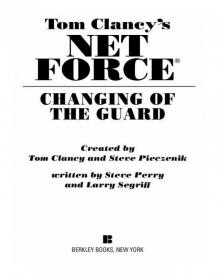 Changing of the Guard
Changing of the Guard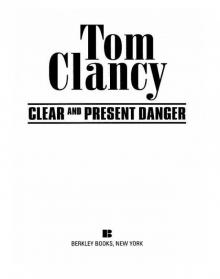 Clear and Present Danger
Clear and Present Danger Hounds of Rome
Hounds of Rome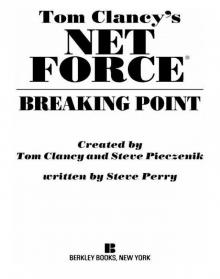 Breaking Point
Breaking Point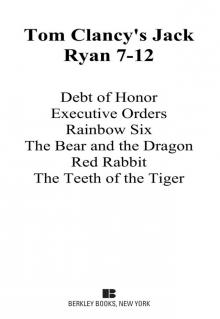 Tom Clancy's Jack Ryan Books 7-12
Tom Clancy's Jack Ryan Books 7-12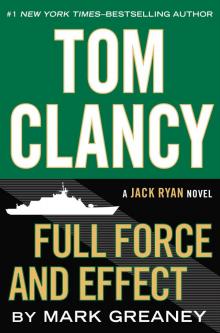 Full Force and Effect
Full Force and Effect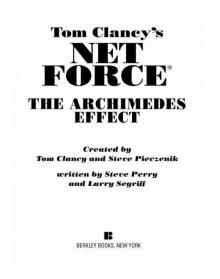 The Archimedes Effect
The Archimedes Effect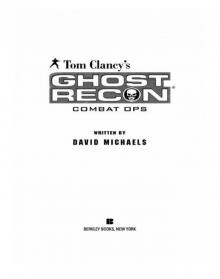 Combat Ops
Combat Ops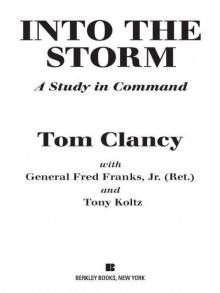 Into the Storm: On the Ground in Iraq
Into the Storm: On the Ground in Iraq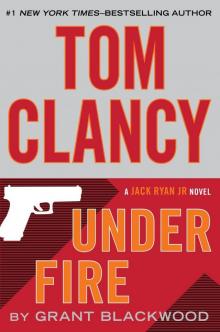 Under Fire
Under Fire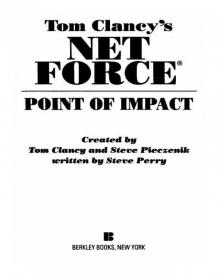 Point of Impact
Point of Impact Red Rabbit
Red Rabbit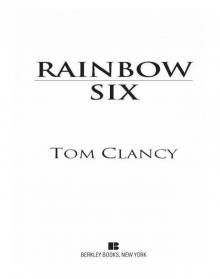 Rainbow Six
Rainbow Six The Hunt for Red October
The Hunt for Red October The Teeth of the Tiger
The Teeth of the Tiger Conviction (2009)
Conviction (2009)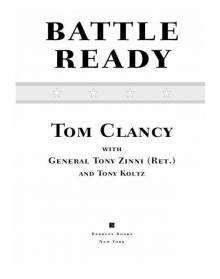 Battle Ready
Battle Ready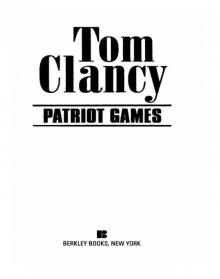 Patriot Games
Patriot Games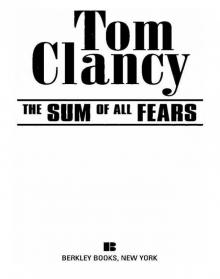 The Sum of All Fears
The Sum of All Fears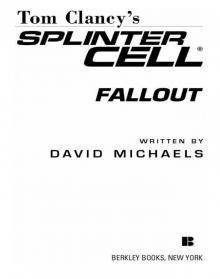 Fallout (2007)
Fallout (2007) Red Storm Rising
Red Storm Rising The Cardinal of the Kremlin
The Cardinal of the Kremlin Executive Orders
Executive Orders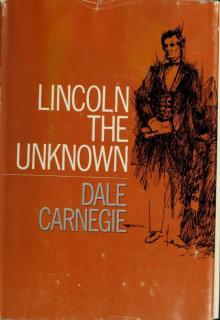 Lincoln, the unknown
Lincoln, the unknown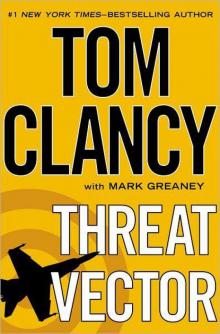 Threat Vector
Threat Vector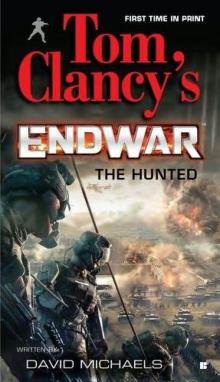 The Hunted
The Hunted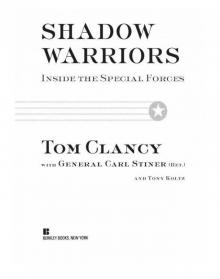 Shadow Warriors: Inside the Special Forces
Shadow Warriors: Inside the Special Forces End Game
End Game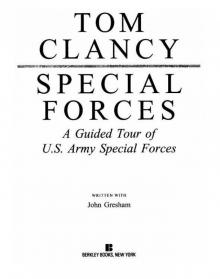 Special Forces: A Guided Tour of U.S. Army Special Forces
Special Forces: A Guided Tour of U.S. Army Special Forces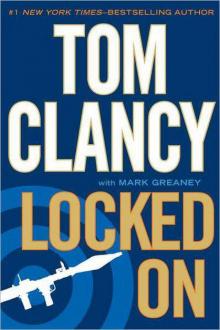 Locked On
Locked On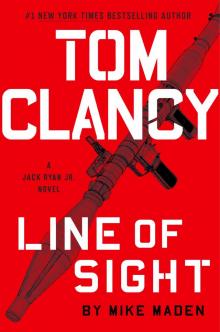 Line of Sight
Line of Sight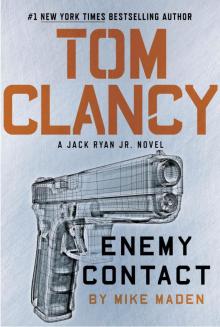 Tom Clancy Enemy Contact - Mike Maden
Tom Clancy Enemy Contact - Mike Maden Fighter Wing: A Guided Tour of an Air Force Combat Wing
Fighter Wing: A Guided Tour of an Air Force Combat Wing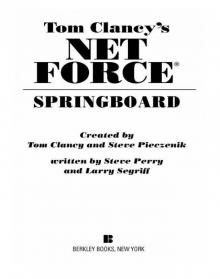 Springboard
Springboard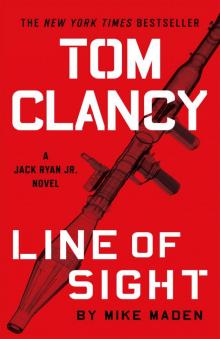 Line of Sight - Mike Maden
Line of Sight - Mike Maden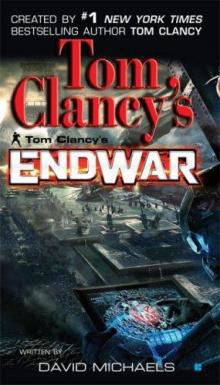 EndWar
EndWar Dead or Alive
Dead or Alive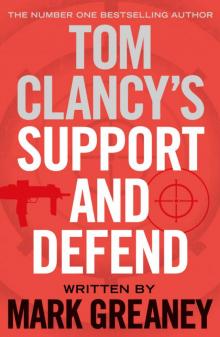 Tom Clancy Support and Defend
Tom Clancy Support and Defend Checkmate
Checkmate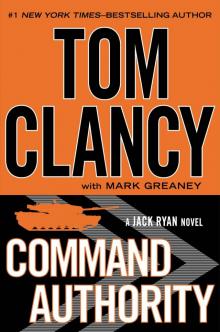 Command Authority
Command Authority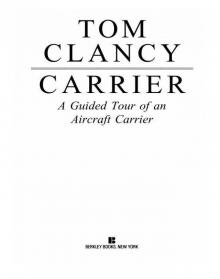 Carrier: A Guided Tour of an Aircraft Carrier
Carrier: A Guided Tour of an Aircraft Carrier Blacklist Aftermath
Blacklist Aftermath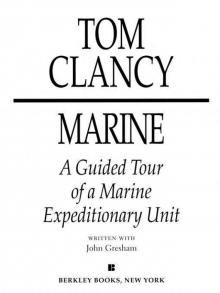 Marine: A Guided Tour of a Marine Expeditionary Unit
Marine: A Guided Tour of a Marine Expeditionary Unit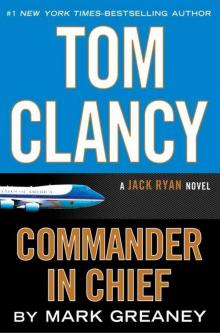 Commander-In-Chief
Commander-In-Chief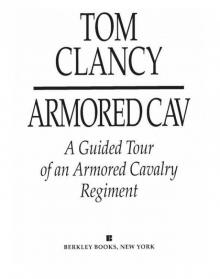 Armored Cav: A Guided Tour of an Armored Cavalry Regiment
Armored Cav: A Guided Tour of an Armored Cavalry Regiment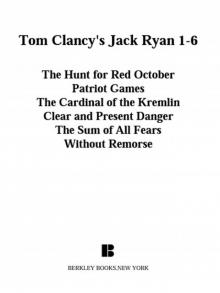 Tom Clancy's Jack Ryan Books 1-6
Tom Clancy's Jack Ryan Books 1-6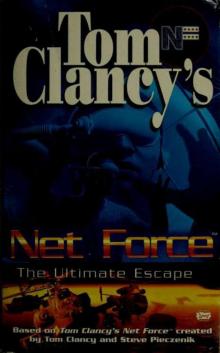 The Ultimate Escape
The Ultimate Escape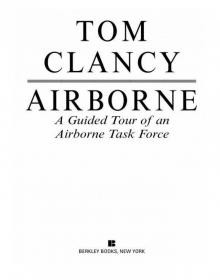 Airborne: A Guided Tour of an Airborne Task Force
Airborne: A Guided Tour of an Airborne Task Force Debt of Honor
Debt of Honor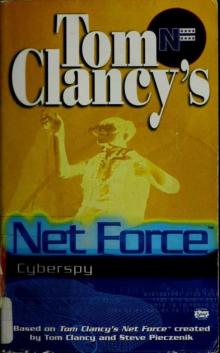 Cyberspy
Cyberspy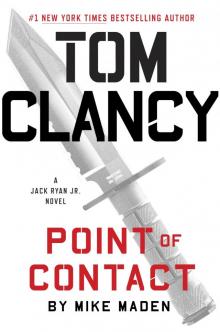 Point of Contact
Point of Contact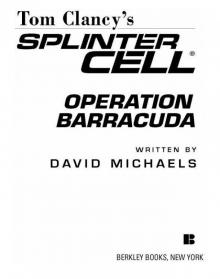 Operation Barracuda (2005)
Operation Barracuda (2005)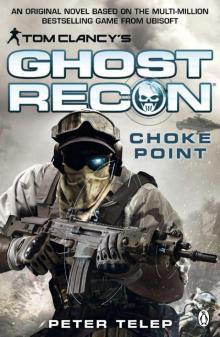 Choke Point
Choke Point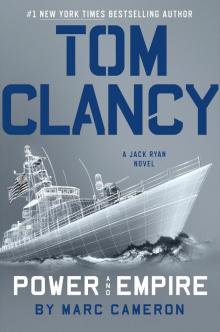 Power and Empire
Power and Empire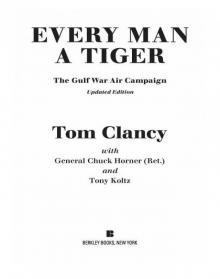 Every Man a Tiger: The Gulf War Air Campaign
Every Man a Tiger: The Gulf War Air Campaign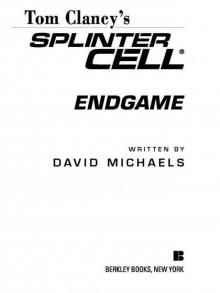 Endgame (1998)
Endgame (1998)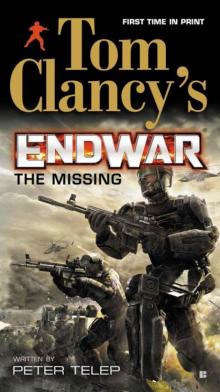 EndWar: The Missing
EndWar: The Missing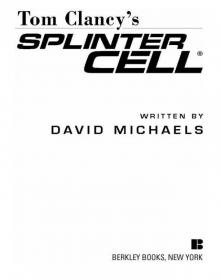 Splinter Cell (2004)
Splinter Cell (2004)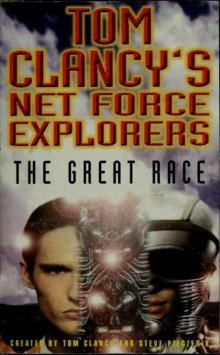 The Great Race
The Great Race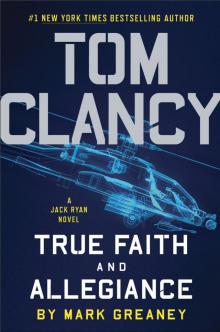 True Faith and Allegiance
True Faith and Allegiance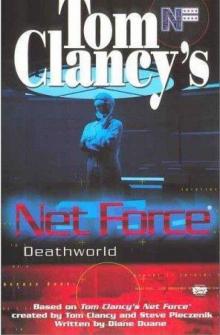 Deathworld
Deathworld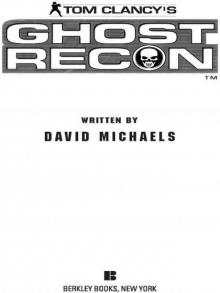 Ghost Recon (2008)
Ghost Recon (2008)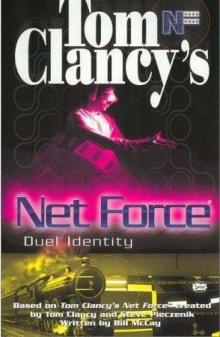 Duel Identity
Duel Identity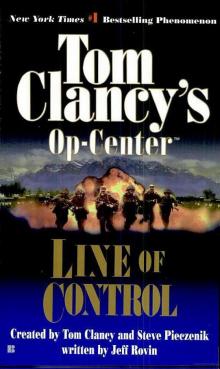 Line of Control o-8
Line of Control o-8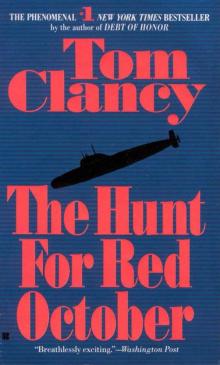 The Hunt for Red October jr-3
The Hunt for Red October jr-3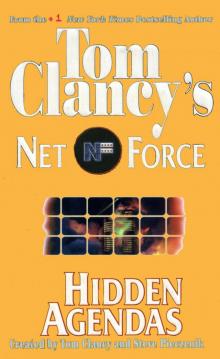 Hidden Agendas nf-2
Hidden Agendas nf-2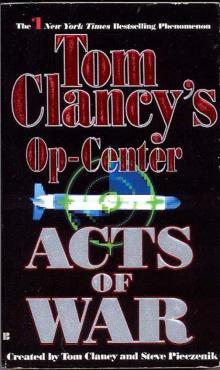 Acts of War oc-4
Acts of War oc-4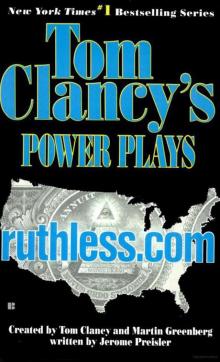 Ruthless.Com pp-2
Ruthless.Com pp-2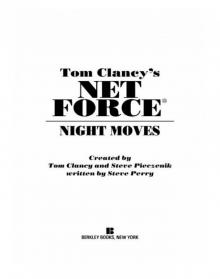 Night Moves
Night Moves The Hounds of Rome - Mystery of a Fugitive Priest
The Hounds of Rome - Mystery of a Fugitive Priest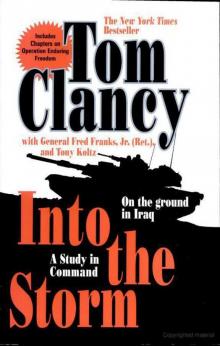 Into the Storm: On the Ground in Iraq sic-1
Into the Storm: On the Ground in Iraq sic-1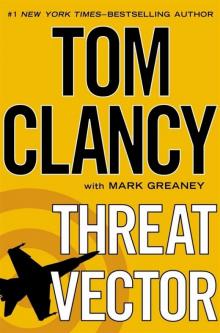 Threat Vector jrj-4
Threat Vector jrj-4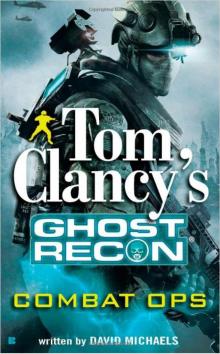 Combat Ops gr-2
Combat Ops gr-2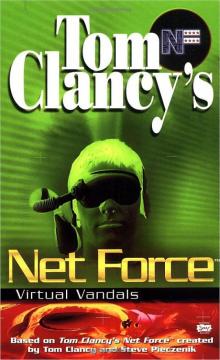 Virtual Vandals nfe-1
Virtual Vandals nfe-1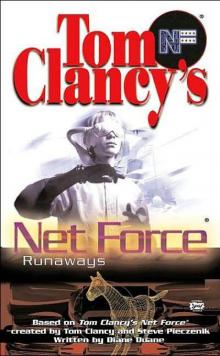 Runaways nfe-16
Runaways nfe-16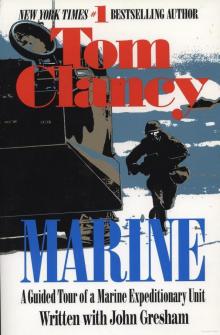 Marine: A Guided Tour of a Marine Expeditionary Unit tcml-4
Marine: A Guided Tour of a Marine Expeditionary Unit tcml-4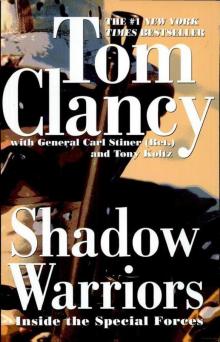 Shadow Warriors: Inside the Special Forces sic-3
Shadow Warriors: Inside the Special Forces sic-3 Jack Ryan Books 1-6
Jack Ryan Books 1-6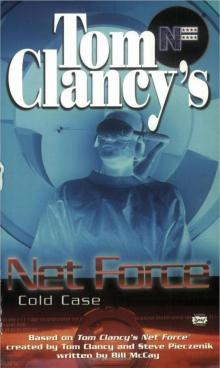 Cold Case nfe-15
Cold Case nfe-15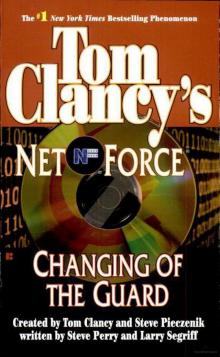 Changing of the Guard nf-8
Changing of the Guard nf-8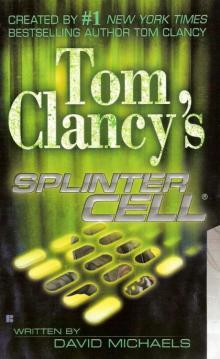 Splinter Cell sc-1
Splinter Cell sc-1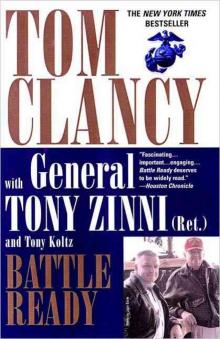 Battle Ready sic-4
Battle Ready sic-4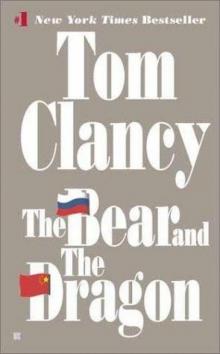 The Bear and the Dragon jrao-11
The Bear and the Dragon jrao-11 Fighter Wing: A Guided Tour of an Air Force Combat Wing tcml-3
Fighter Wing: A Guided Tour of an Air Force Combat Wing tcml-3 Patriot Games jr-1
Patriot Games jr-1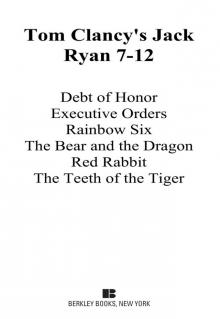 Jack Ryan Books 7-12
Jack Ryan Books 7-12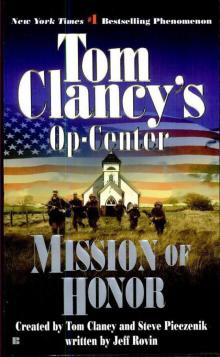 Mission of Honor o-9
Mission of Honor o-9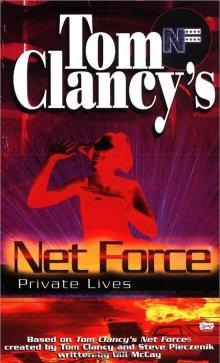 Private Lives nfe-9
Private Lives nfe-9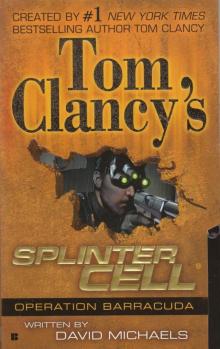 Operation Barracuda sc-2
Operation Barracuda sc-2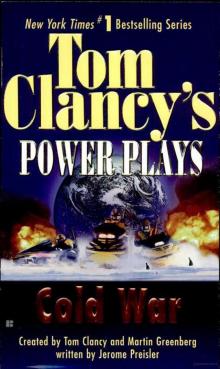 Cold War pp-5
Cold War pp-5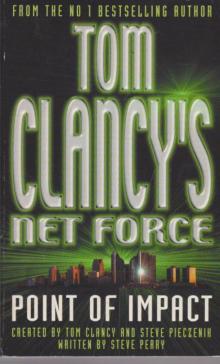 Point of Impact nf-5
Point of Impact nf-5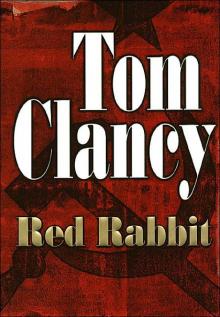 Red Rabbit jr-9
Red Rabbit jr-9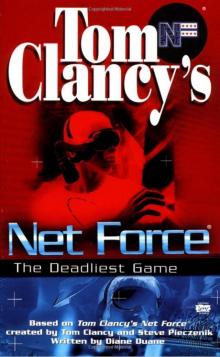 The Deadliest Game nfe-2
The Deadliest Game nfe-2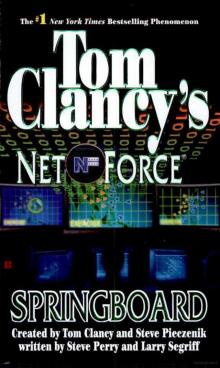 Springboard nf-9
Springboard nf-9 Safe House nfe-10
Safe House nfe-10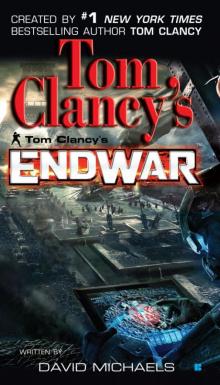 EndWar e-1
EndWar e-1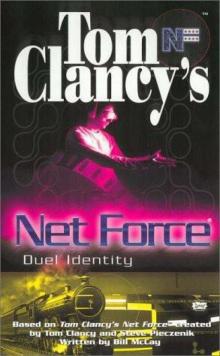 Duel Identity nfe-12
Duel Identity nfe-12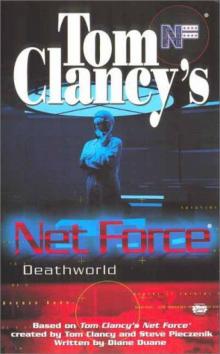 Deathworld nfe-13
Deathworld nfe-13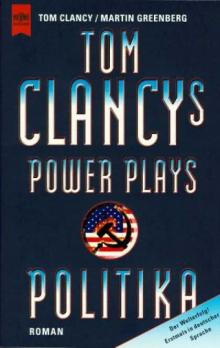 Politika pp-1
Politika pp-1 Rainbow Six jr-9
Rainbow Six jr-9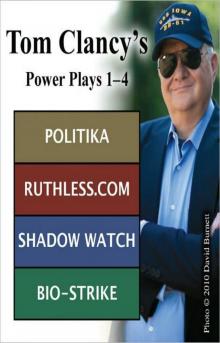 Tom Clancy's Power Plays 1 - 4
Tom Clancy's Power Plays 1 - 4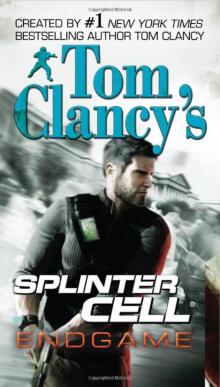 Endgame sc-6
Endgame sc-6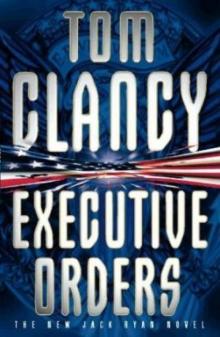 Executive Orders jr-7
Executive Orders jr-7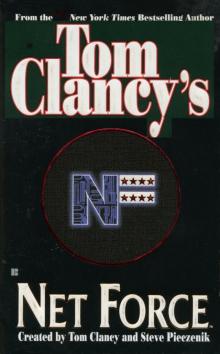 Net Force nf-1
Net Force nf-1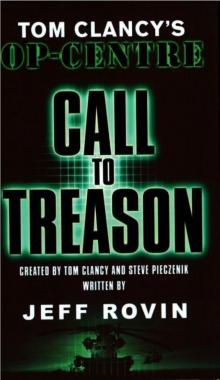 Call to Treason o-11
Call to Treason o-11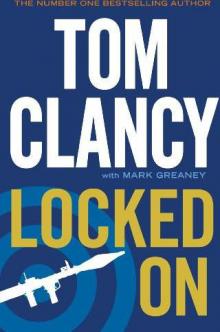 Locked On jrj-3
Locked On jrj-3 Against All Enemies
Against All Enemies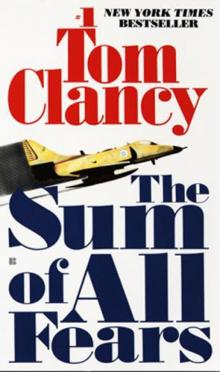 The Sum of All Fears jr-7
The Sum of All Fears jr-7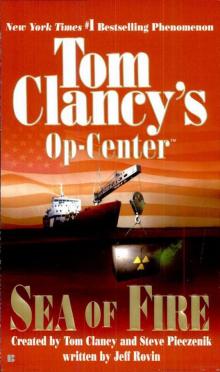 Sea of Fire o-10
Sea of Fire o-10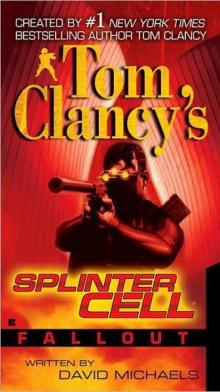 Fallout sc-4
Fallout sc-4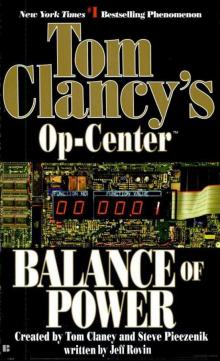 Balance of Power o-5
Balance of Power o-5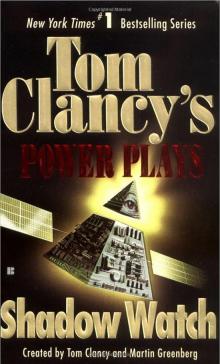 Shadow Watch pp-3
Shadow Watch pp-3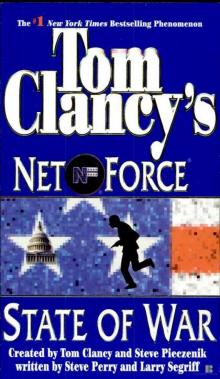 State of War nf-7
State of War nf-7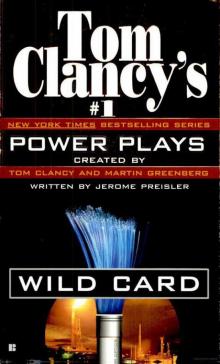 Wild Card pp-8
Wild Card pp-8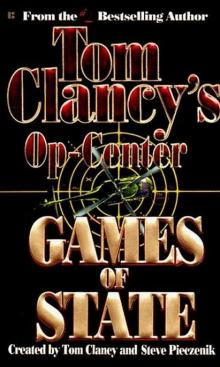 Games of State o-3
Games of State o-3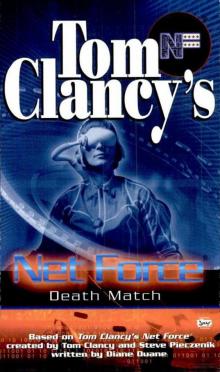 Death Match nfe-18
Death Match nfe-18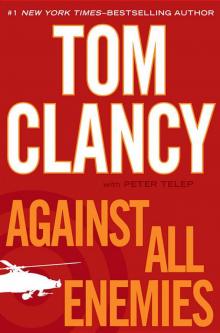 Against All Enemies mm-1
Against All Enemies mm-1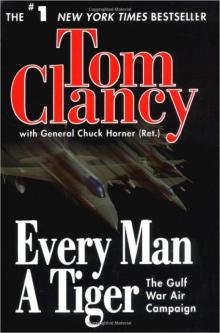 Every Man a Tiger: The Gulf War Air Campaign sic-2
Every Man a Tiger: The Gulf War Air Campaign sic-2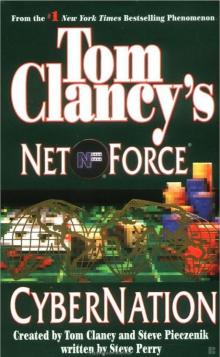 Cybernation nf-6
Cybernation nf-6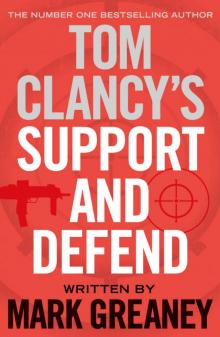 Support and Defend
Support and Defend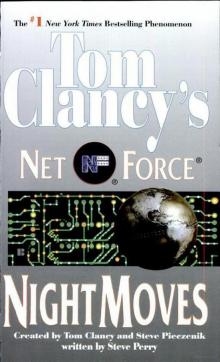 Night Moves nf-3
Night Moves nf-3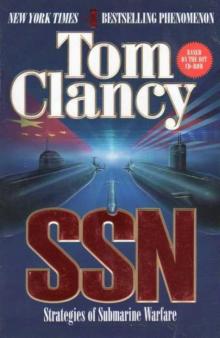 SSN
SSN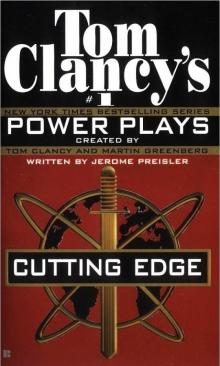 Cutting Edge pp-6
Cutting Edge pp-6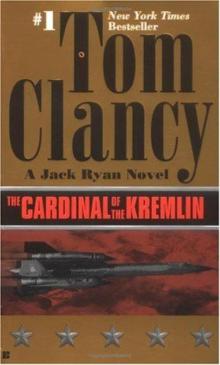 The Cardinal of the Kremlin jrao-5
The Cardinal of the Kremlin jrao-5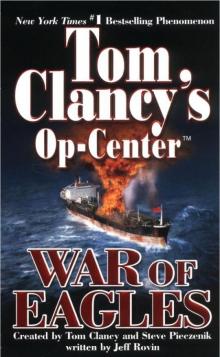 War of Eagles o-12
War of Eagles o-12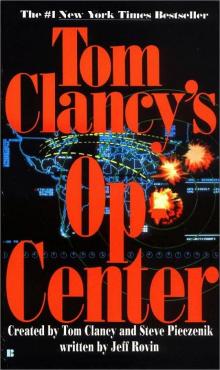 Op-Center o-1
Op-Center o-1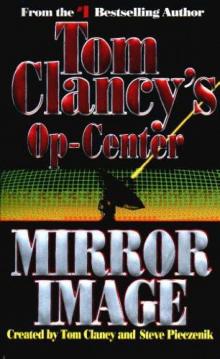 Mirror Image o-2
Mirror Image o-2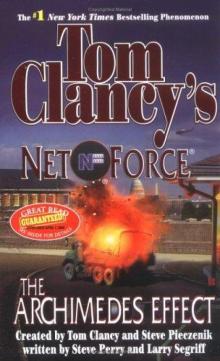 The Archimedes Effect nf-10
The Archimedes Effect nf-10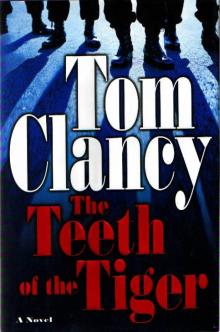 Teeth of the Tiger jrj-1
Teeth of the Tiger jrj-1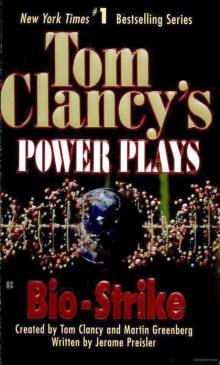 Bio-Strike pp-4
Bio-Strike pp-4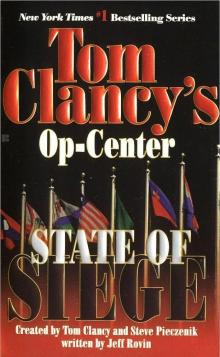 State of Siege o-6
State of Siege o-6 Debt of Honor jr-6
Debt of Honor jr-6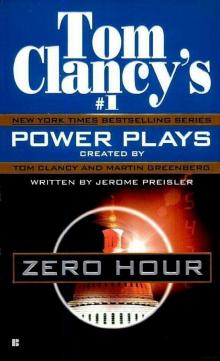 Zero Hour pp-7
Zero Hour pp-7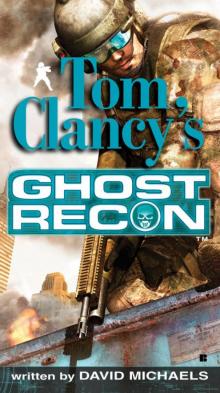 Ghost Recon gr-1
Ghost Recon gr-1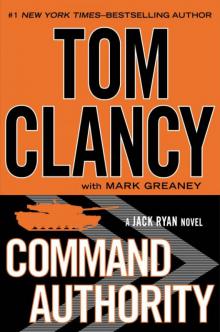 Command Authority jr-10
Command Authority jr-10 Tom Clancy's Power Plays 5 - 8
Tom Clancy's Power Plays 5 - 8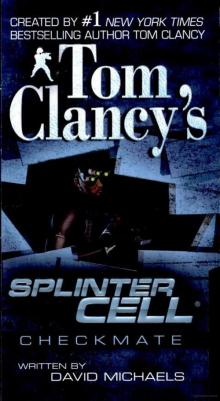 Checkmate sc-3
Checkmate sc-3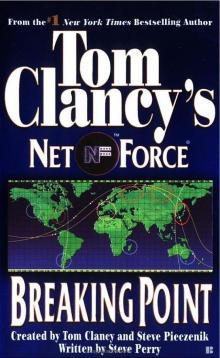 Breaking Point nf-4
Breaking Point nf-4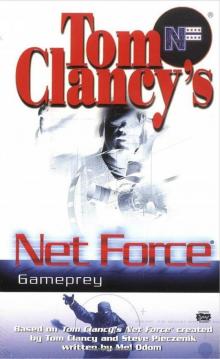 Gameprey nfe-11
Gameprey nfe-11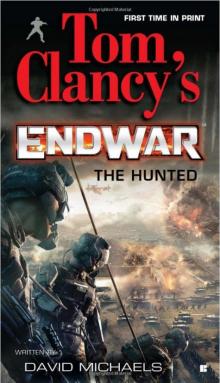 The Hunted e-2
The Hunted e-2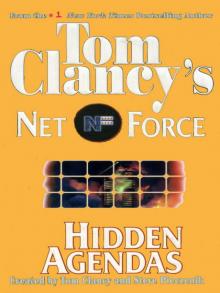 Hidden Agendas
Hidden Agendas Divide and Conquer o-7
Divide and Conquer o-7